Submitted:
10 April 2023
Posted:
18 April 2023
You are already at the latest version
Abstract
Keywords:
1. Introduction
2. Numerical simulations
2.1. Frequency equations of an Isotropic and homogeneous material
2.2. Effect of Porosity
2.3. Biphasic material
2.3.1. Influence of individual elastic properties of phases (Ea/Em)
2.3.2. Effect of Volumetric fraction
2.4. Triphasic composite material
3. Experimental validation
3.1. Materials and mixes
3.2. Specimens
- (i)
- Mortars (1-M, 2-M and 3-M) - five prismatic specimens of 40 mm x 40 mm x 160 mm).
- (ii)
- Concretes (1-C, 2-C and 3-C) - five prismatic specimens of 150 mm x 150 mm x 500 mm.
- (iii)
- Rocks’ samples - Five cylindrical samples of 55 mm x 125 mm made by core drills extracted from an intact diabase rock.
3.3. Acoustic tests and evaluation of experimental Ed
3.4. Experimental Results and discussion
4. Conclusions and final remarks
- (i)
- Homogenization composite models as Reuss and Hirsch (x = 0.27) are simple and accuracy ways to predict the dynamic elastic modulus with 5 % maximum error, regarding the ITZ conditions. Hirsch (x = 0.27) best predicts Ed for ITZ = 0.05 mm and 0.10 mm while Reuss model for ITZ = 0.25 mm. In the experimental field, a similar tendency was observed, once Hirsch (x = 0.27) successfully represented the Ed (t) phenomenon for concretes with low and moderate water cement ratios (w/c = 0.3 and 0.5), and Reuss was the only to predict the mixture with w/c = 0.70 with an error always lower than 5%;
- (ii)
- Voigt, H-S and Hansen always overestimate Ed for all numerical simulations and experimental validation;
- (iii)
- Hashin-Shtrikman limits does not contain biphasic theoretical models and cannot be applied to dynamic situations perfectly [18];
- (iv)
- Although biphasic models, as Reuss, Hirsch (x = 0.27), Voigt and H-S have incorporated ITZ, they will display the same tendencies observed for classic biphasic models. An advantage is the predict of the decrease in Ed in function of ITZ.
- (v)
- The effective Poisson ratio obtained by natural frequency shows a considerable error, due to some degree of anisotropy generated by the configuration of aggregates inside the mortar. The arrangement of coarse aggregates also influences this measure, since different arrangements with same elastic properties and volumetric fraction might generate a certain divergency in the Poisson ratio.
References
- P. J.M. Mehta, P.K.; Monteiro, Concreto: Estrutura, Propriedades e Materiais, 3a, McGraw-Hil, New York, 2008. [Google Scholar]
- V.M. Malhotra, V. Sivasundaram, Resonant Frequency Methods * 7.1 7.2, in: Nondestruct. Test. Concr., 1st ed., CRC PRESS, New York, 1989.
- A.M. Neville, Propriedades Do Concreto, 2a, PINI, São Paulo, 1997.
- American Society for Testing and Materials ASTM C215-02, Standard Test Method for Fundamental Transverse, Longitudinal, and Torsional Resonant Frequencies of Concrete Specimens, in: 2003: pp. 1–7.
- American Society for Testing and Materials ASTM E1876-01, Standard Test Method for Dynamic Young ’ s Modulus, Shear Modulus, and Poisson ’ s Ratio by Impulse Excitation of Vibration, (2001).
- N. Swamy, G. Rigby, Dynamic properties of hardened paste, mortar and concrete, Matériaux Constr. (1971) 13–40.
- N.S. Bawa, J.W.S. Graft-Johnson, Effect of Mix Proportion, Water-Cement Ratio, Age and Curing Conditions on the Dynamic Modulus of Elasticity of Concrete, Build. Sci. 3 (1969) 171–177.
- F.D. Lydon, M. Iacovou, SOME FACTORS AFFECTING THE DYNAMIC MODULUS OF ELASTICITY OF HIGH STRENGTH CONCRETE, Cem. Concr. Res. 25 (1995) 1246–1256.
- W. Voigt, Űber die Beziehung zwischen den beiden Elastizi ä tskonstanten isotroper Körper, Wied. Ann. J. 38 (1889) 573–587.
- P.J.M. Monteiro, C.T. Chang, The elastic moduli of calcium hydroxide, Cem. Concr. Res. 25 (1995) 1605–1609. [CrossRef]
- İ.B. Topçu, Alternative estimation of the modulus of elasticity for dam concrete, Cem. Concr. Res. 35 (2005) 2199–2202. [CrossRef]
- İ.B. Topçu, T. Bilir, A.R. Boğa, Estimation of the modulus of elasticity of slag concrete by using composite material models, Constr. Build. Mater. 24 (2010) 741–748. [CrossRef]
- A. Reuss, Berchung der Fiessgrenze von Mischkristallen auf Grund der Plastizi ä tsbedingung für Einkristalle, Zeitschrift Für Angew. Math. Und Mech. 9 (1929) 49–58.
- R. Hill, The Elastic Behaviour of a Crystalline Aggregate, Proc. Phys. Soc. 65 (1952) 349–354.
- Z. Hashin, S. Shtrikman, A VARIATIONAL APPROACH TO THE THEORY OF THE ELASTIC BEHAVIOUR OF MULTIPHASE MATERIALS, J. Mech. Phys. Solids. 11 (1963) 127–140.
- U. Nilsen, P.J.M. Monteiro, CONCRETE: A THREE PHASE MATERIAL, Cem. Concr. Res. 23 (1993) 147–151.
- P. Simeonov, S. Ahmad, Effect of transition zone on the elastic behavior of cement-based composites, Cem. Concr. Res. 25 (1995) 165–176. [CrossRef]
- S. Nemat-nasser, A. Srivastava, Journal of the Mechanics and Physics of Solids Bounds on effective dynamic properties of elastic composites, J. Mech. Phys. Solids. 61 (2013) 254–264. [CrossRef]
- E.J. Garboczi, J.G. Berryman, Elastic moduli of a material containing composite inclusions: effective medium theory and finite element computations, Mech. Mater. 33 (2001) 455–470. [CrossRef]
- G. Constantinides, F.J. Ulm, The effect of two types of C-S-H on the elasticity of cement-based materials: Results from nanoindentation and micromechanical modeling, Cem. Concr. Res. 34 (2004) 67–80. [CrossRef]
- Q. Chen, M.M. Nezhad, Q. Fisher, H.H. Zhu, Multi-scale approach for modeling the transversely isotropic elastic properties of shale considering multi-inclusions and interfacial transition zone, Int. J. Rock Mech. Min. Sci. 84 (2016) 95–104. [CrossRef]
- J. Zheng, X. Zhou, L. Sun, Analytical solution for Young’s modulus of concrete with aggregate aspect ratio effect, Mag. Concr. Res. 67 (2015) 963–971. [CrossRef]
- J.J. Zheng, Y.F. Wu, X.Z. Zhou, Z.M. Wu, X.Y. Jin, Prediction of young’s modulus of concrete with two types of elliptical aggregate, ACI Mater. J. 111 (2014) 603–612. [CrossRef]
- J. Zheng, X. Zhou, X. Jin, An n-layered spherical inclusion model for predicting the elastic moduli of concrete with inhomogeneous ITZ, Cem. Concr. Compos. 34 (2012) 716–723. [CrossRef]
- Kamtornkiat Musiket; Mitchell Rosendahl; and Yunping Xi, Fracture of Recycled Aggregate Concrete under High Loading Rates, J. Mater. Civ. Eng. 25 (2016) 864–870. [CrossRef]
- B. Pichler, C. Hellmich, J. Eberhardsteiner, Spherical and acicular representation of hydrates in a micromechanical model for cement paste: Prediction of early-age elasticity and strength, Acta Mech. 203 (2009) 137–162. [CrossRef]
- Hashin;, P.J.M. Monteiro, A Novel Approach to Determine the Elastic Properties of the Interphase between the Aggregate and the Cement Paste, Key Eng. Mater. 462–463 (2011) 680–685. [CrossRef]
- F. Duplan, A. Abou-Chakra, A. Turatsinze, G. Escadeillas, S. Brule, F. Masse, Prediction of modulus of elasticity based on micromechanics theory and application to low-strength mortars, Constr. Build. Mater. 50 (2014) 437–447. [CrossRef]
- G. Pickett, Equations for Computing Elastic Constants from Flexural and Torsional Resonant Frequencies of Vibration of Prisms and Cylinders, Proc. Am. Soc. Test. Mater. 45 (1945) 846–866.
- A.R. Boccaccini, Z. Fan, A new approach for the young’s modulus-porosity correlation of ceramic materials, Ceram. Int. 23 (1997) 239–245. [CrossRef]
- D.P.H. HASSELMAN, On the Porosity Dependence of the Elastic Moduli of Polycrystalline Refractory Materials, J. Am. Ceram. Soc. 45 (1962) 452–453. [CrossRef]
- Z. Hashin, The Elastic Moduli of Heterogeneous Materials, J. Appl. Mech. 29 (1962) 143. [CrossRef]
- J.K. Mackenzie, No Title, Proc. Phys. Soc. 63B (1950) 2–11.
- Shehata, Deformações Instantâneas do Concreto, in: G.C. Isaia (Ed.), Concreto, Ensino, Pesqui. e Realiz., Ibracon, São Paulo, 2005: pp. 631–685.
- Z. Jia, Y. Han, Y. Zhang, C. Qiu, C. Hu, Z. Li, Quantitative characterization and elastic properties of interfacial transition zone around coarse aggregate in concrete, J. Wuhan Univ. Technol. Sci. Ed. 32 (2017) 838–844. [CrossRef]
- G. Li, Y. Zhao, S.-S. Pang, Y. Li, Effective Young’s modulus estimation of concrete, Cem. Concr. Res. 29 (1999) 1455–1462. [CrossRef]
- American Society for Testing and Materials - standard specification for Portland cement, (2011).
- Associação Brasileira de Normas Técnicas, ABNT NBR 5733 - Cimento Portland de alta resistência inicial, (1991) 1–5.
- Associação Brasileira de Normas Técnicas. ABNT, ABNT NBR 7211 - Agregados para concreto - Especificação, in: 2009.
- CEB FIB - COMITÉ EURO-INTERNACIONAL DU BÉTON, Model Code 2010, (2010).
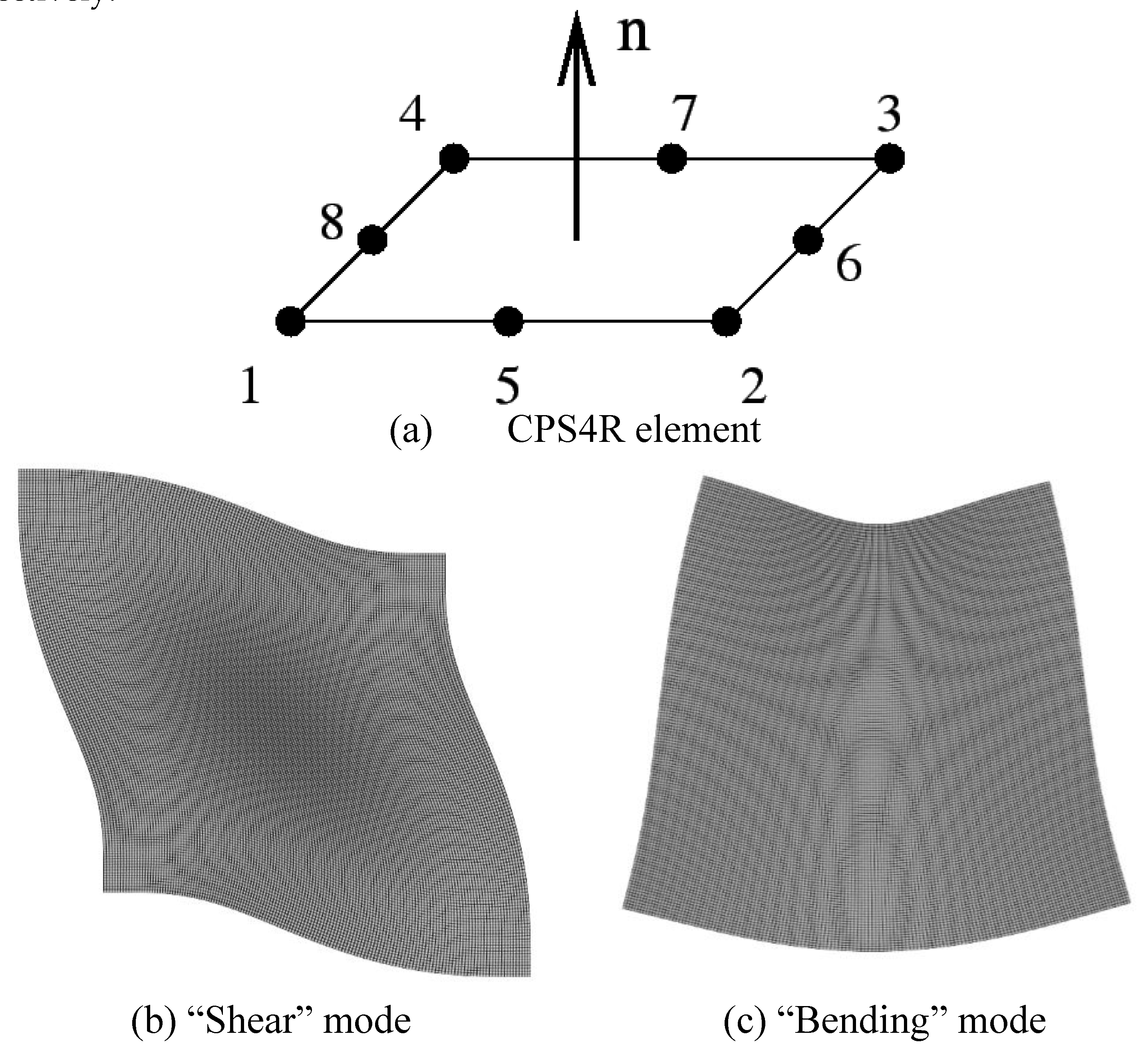
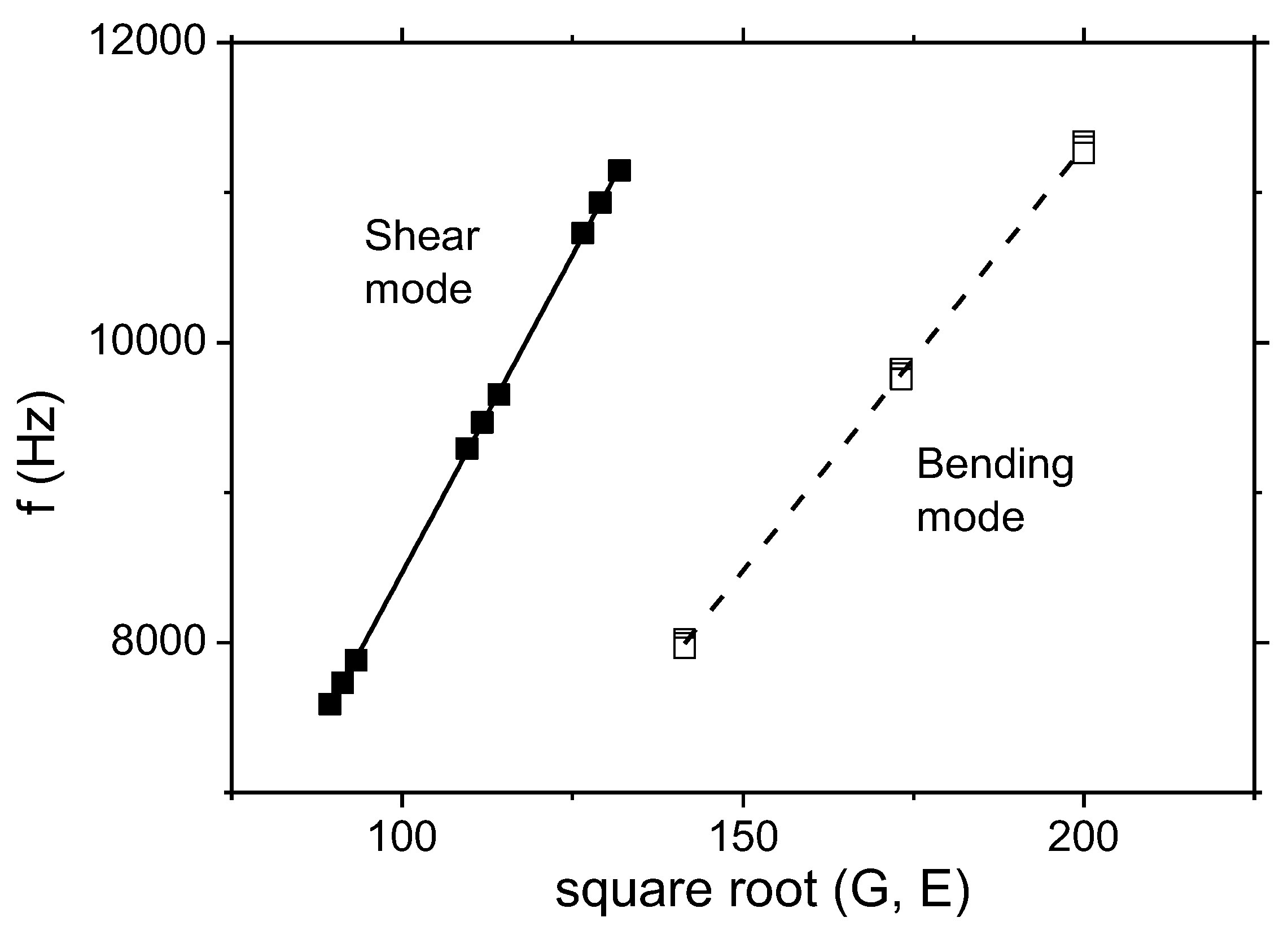
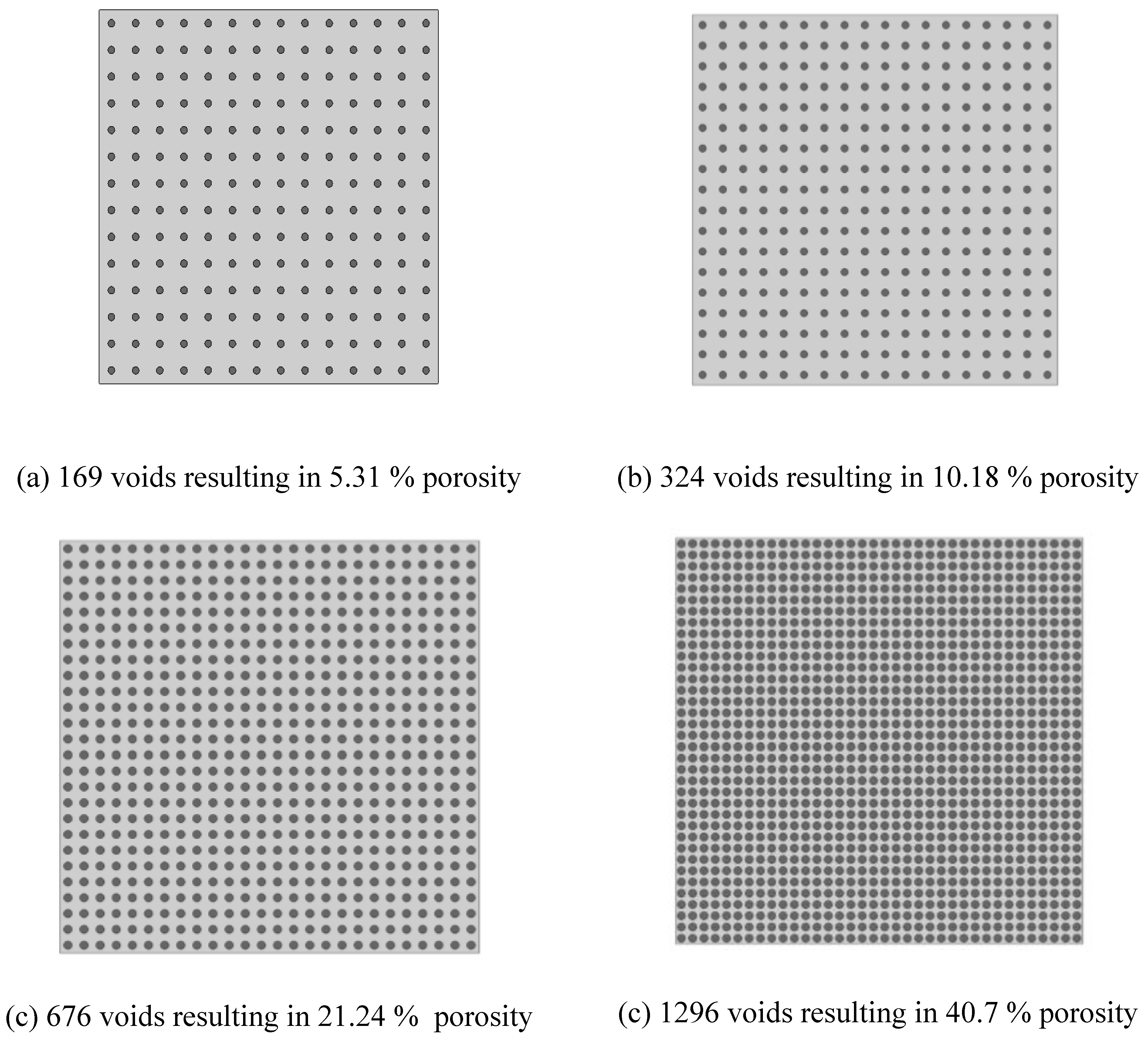
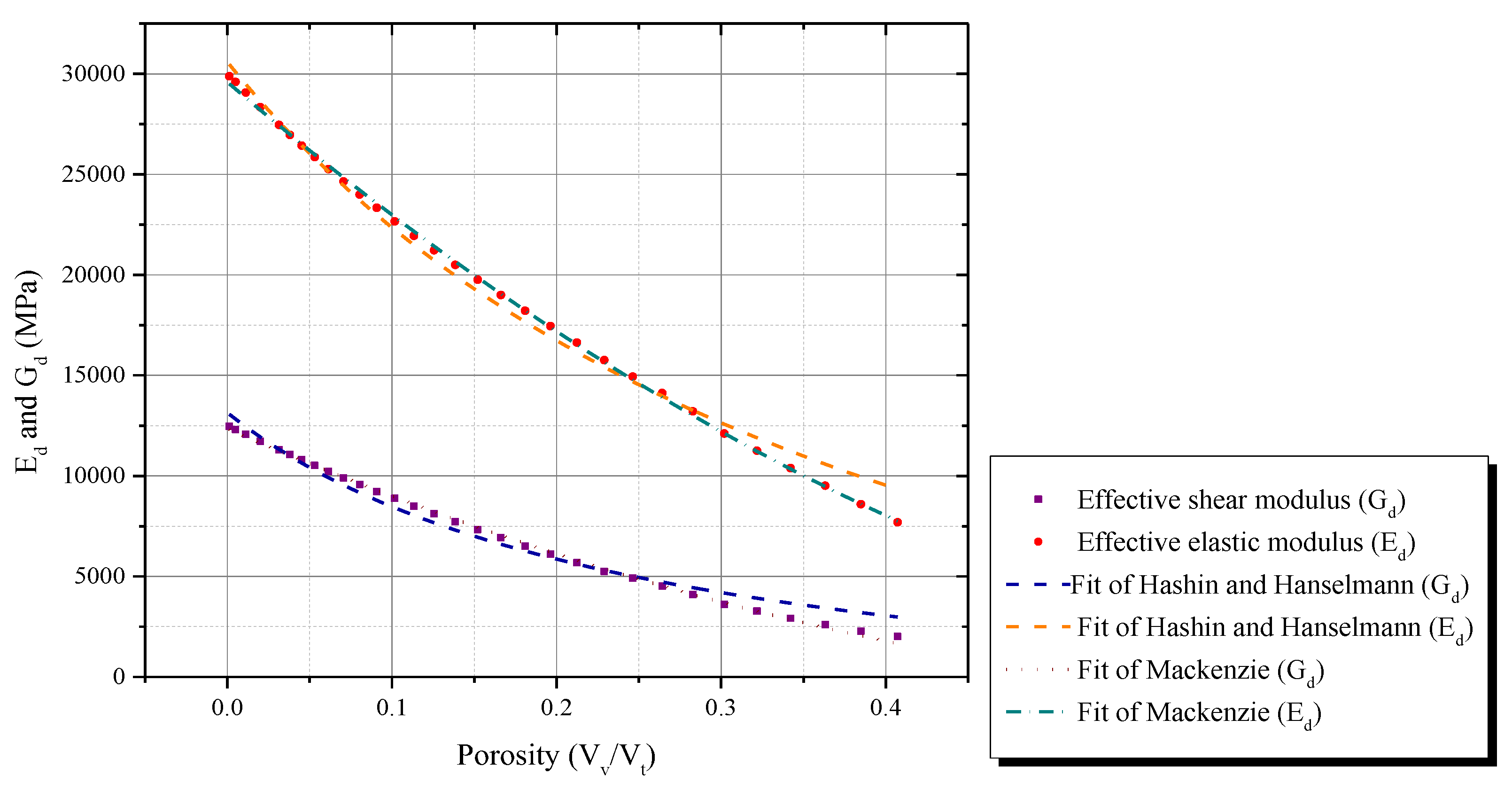
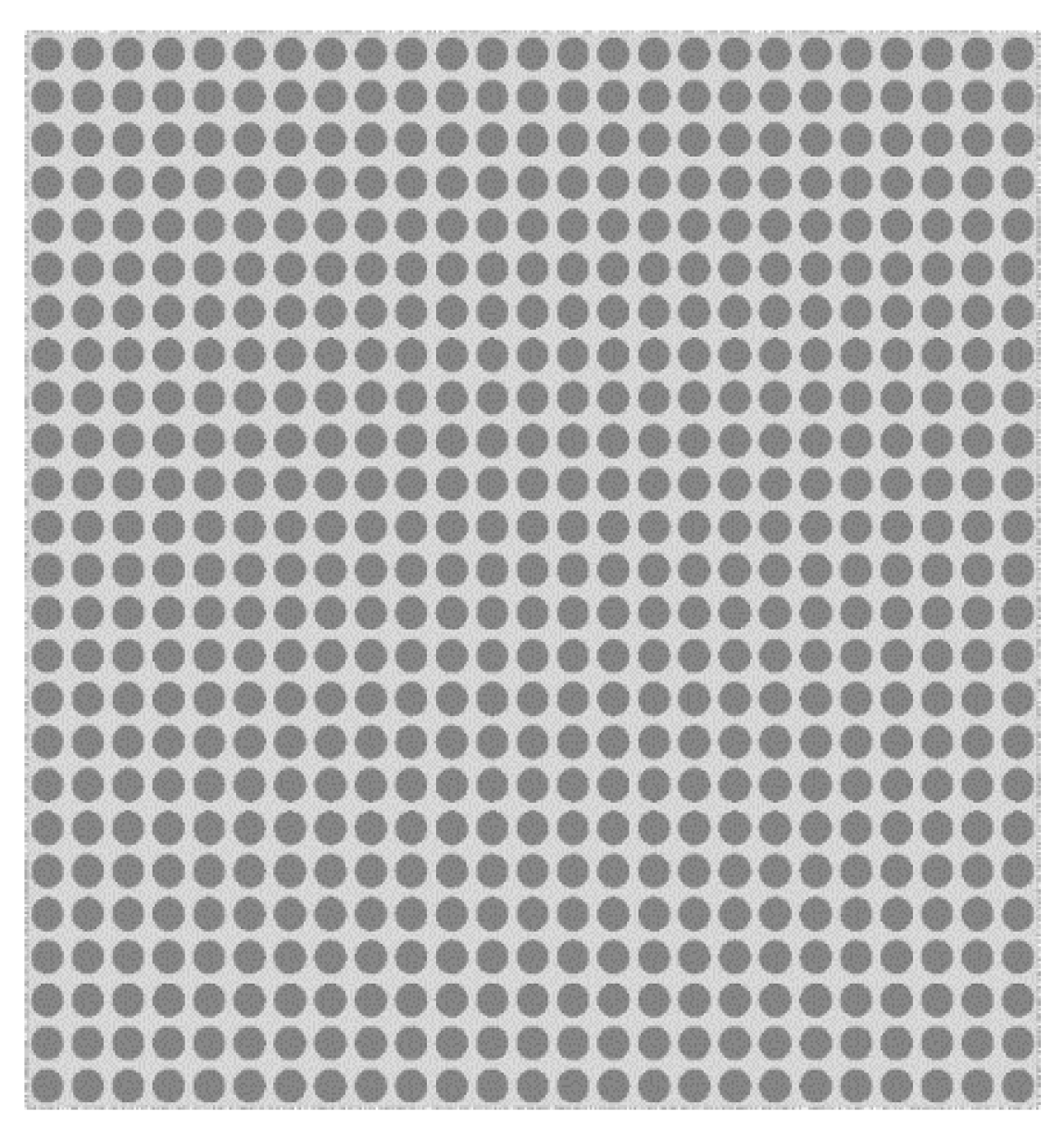
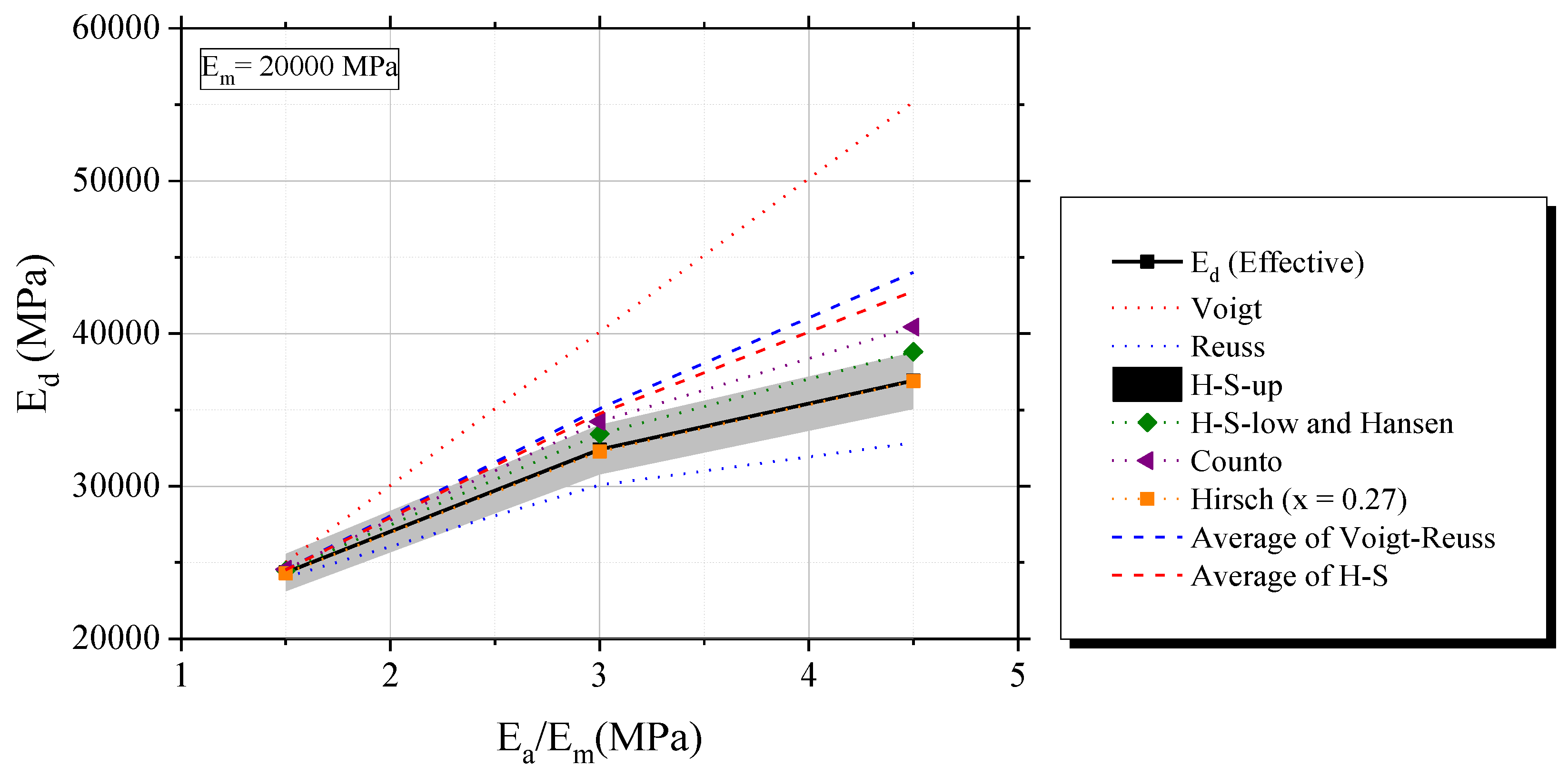
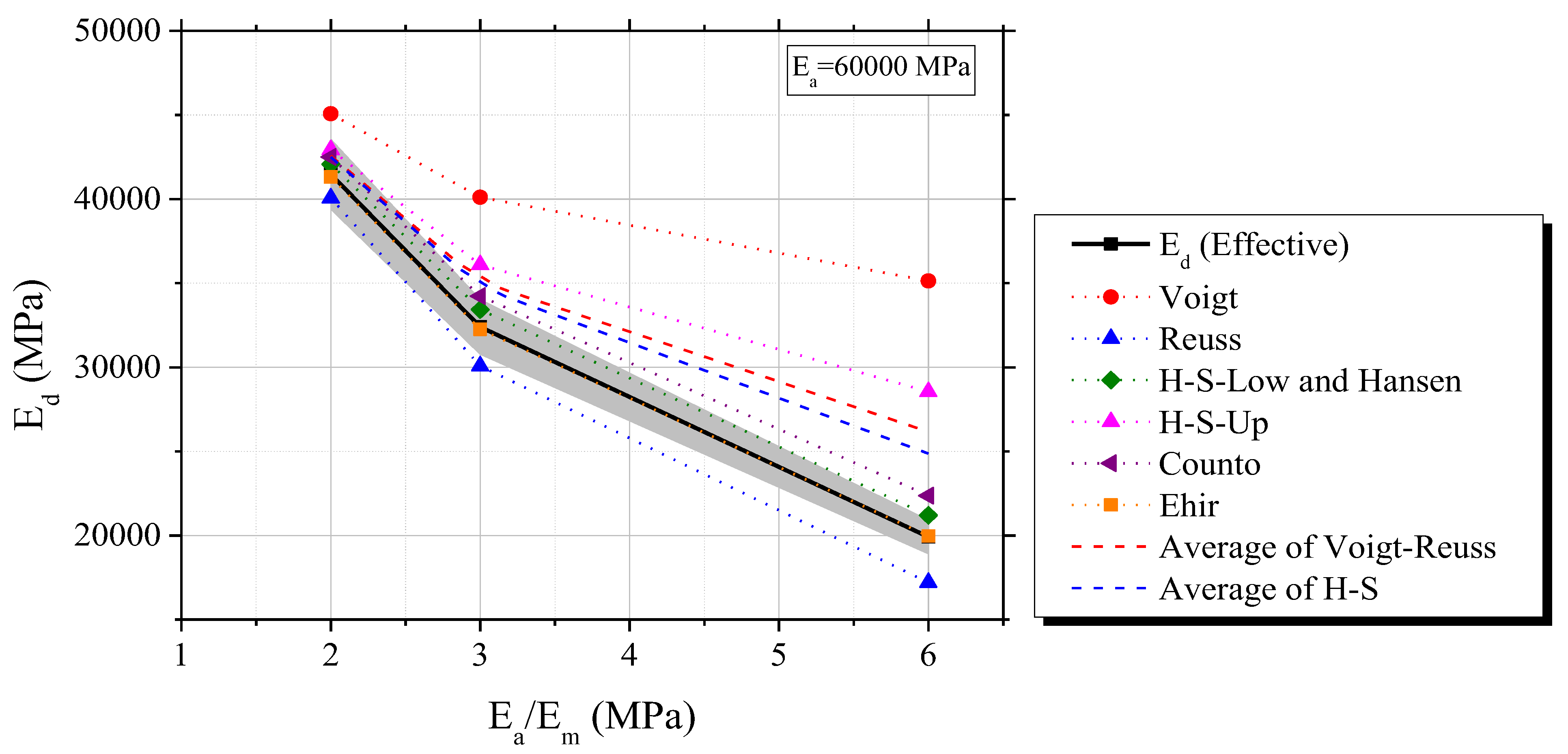
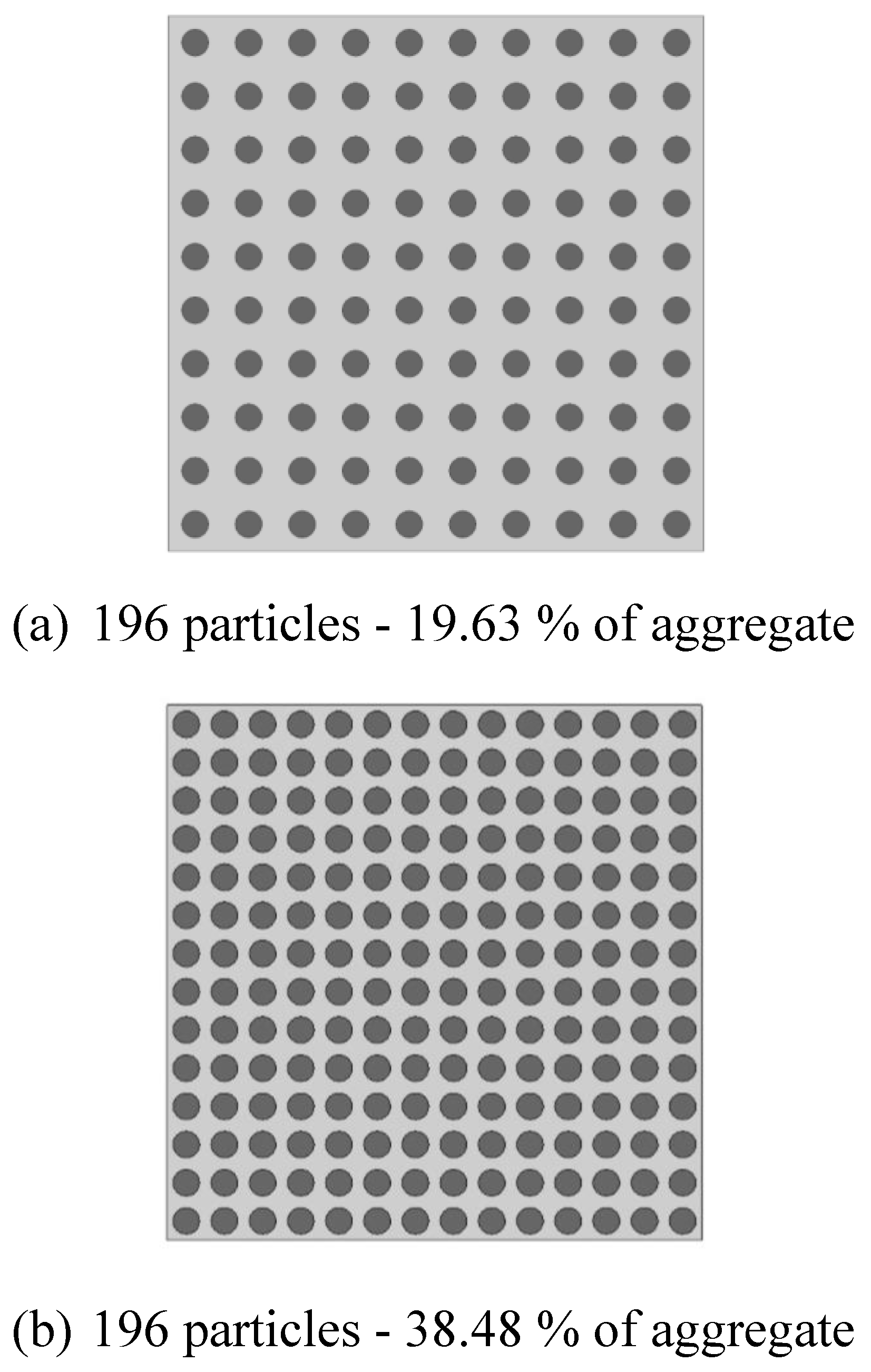
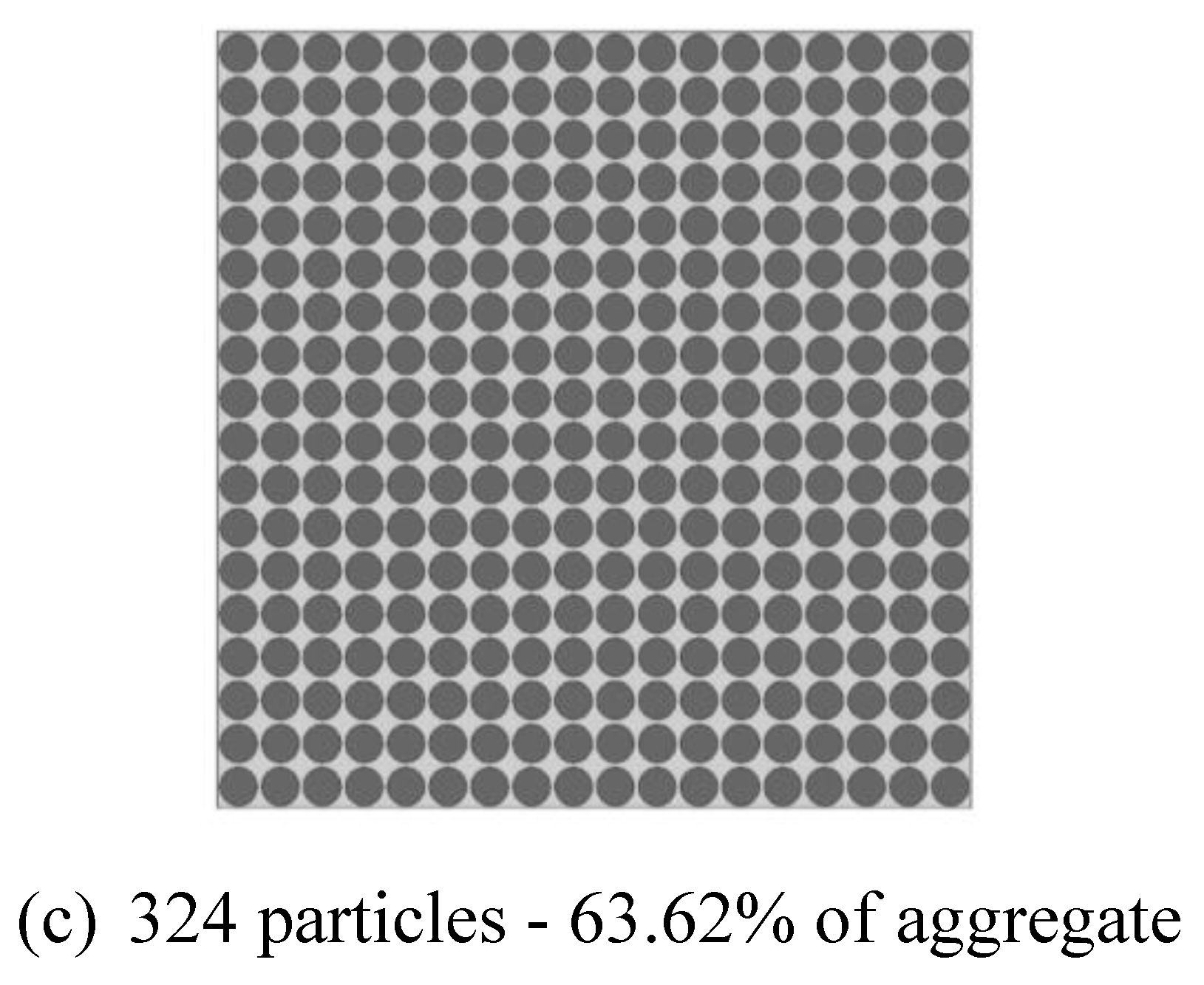
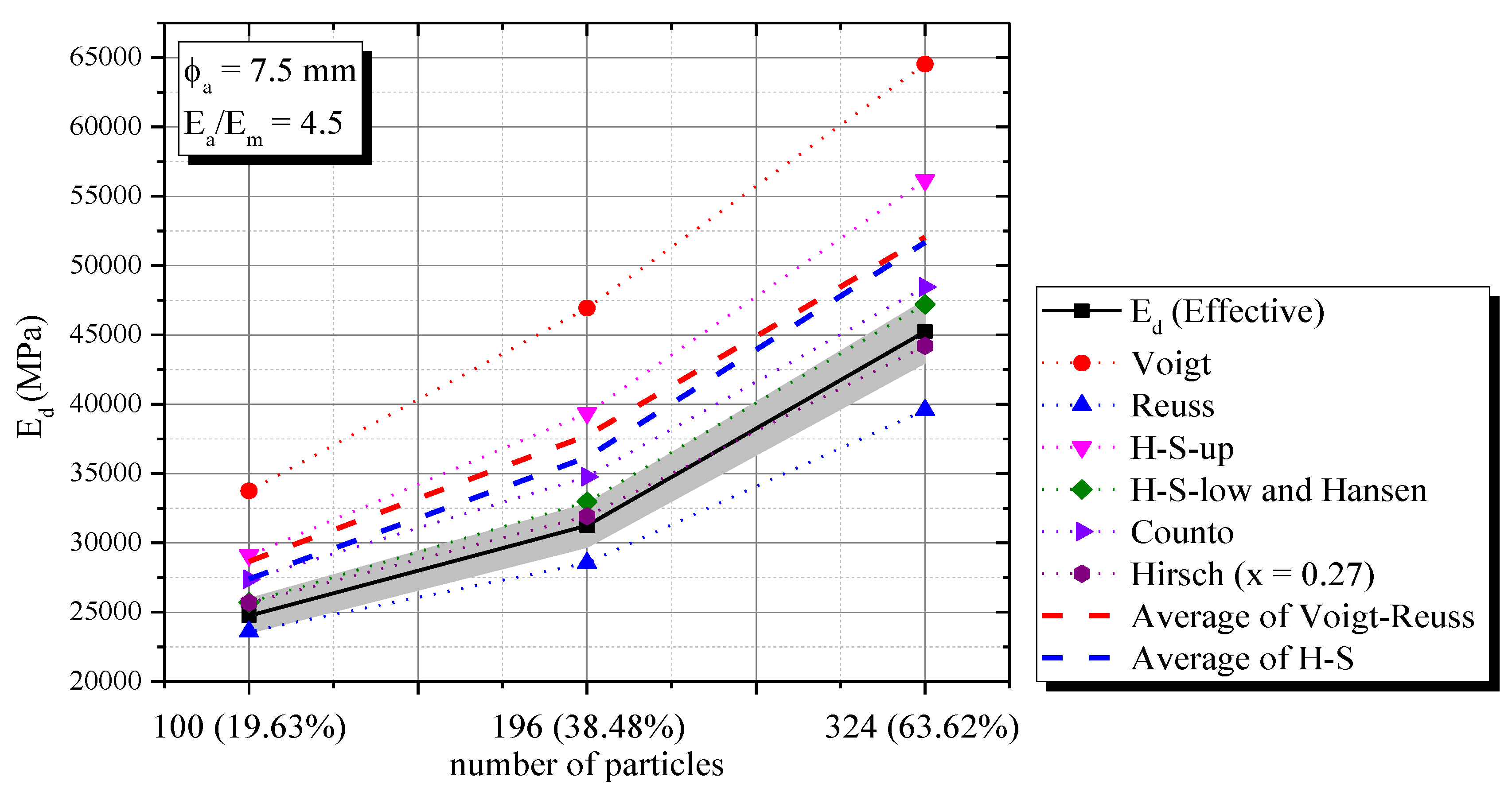
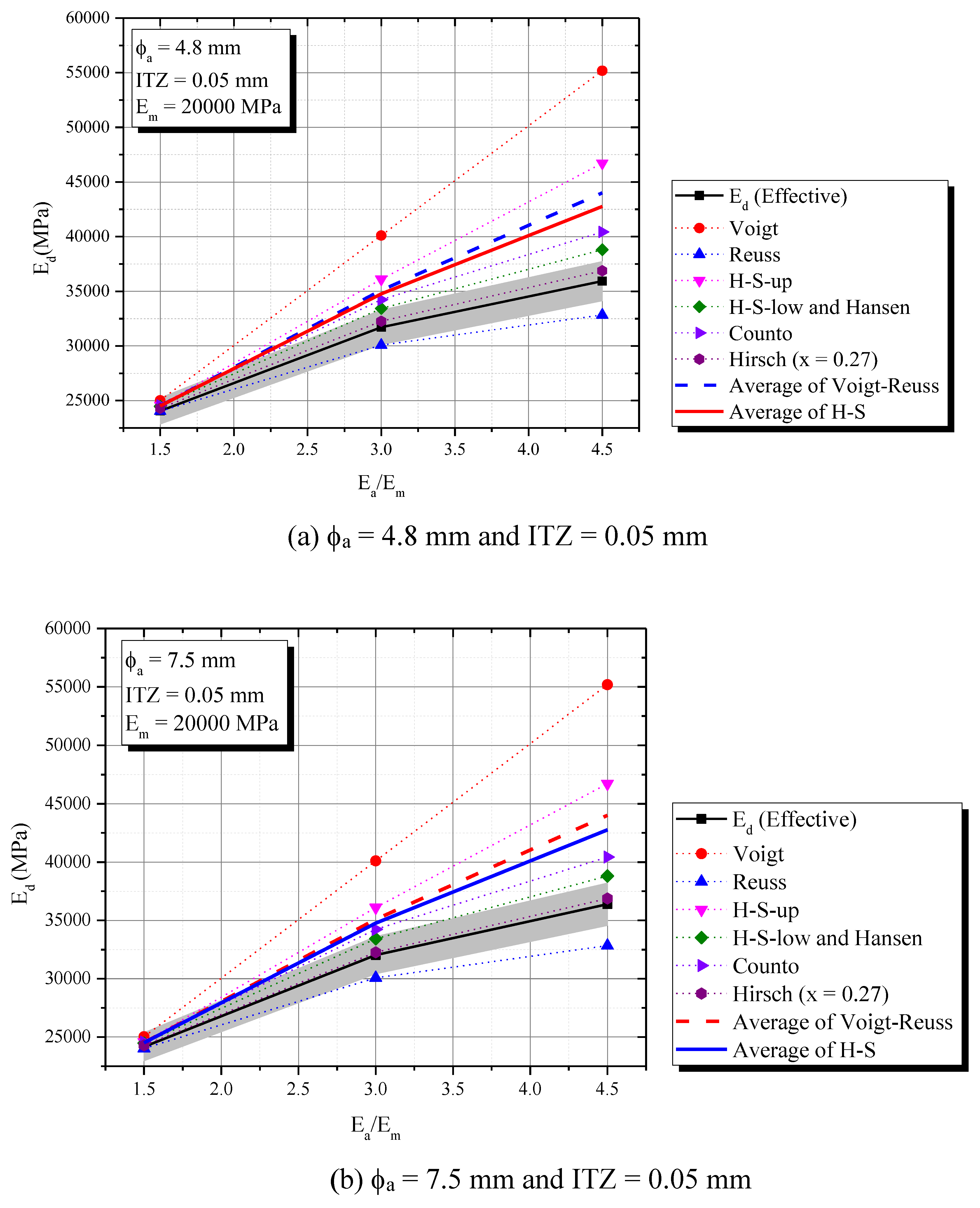
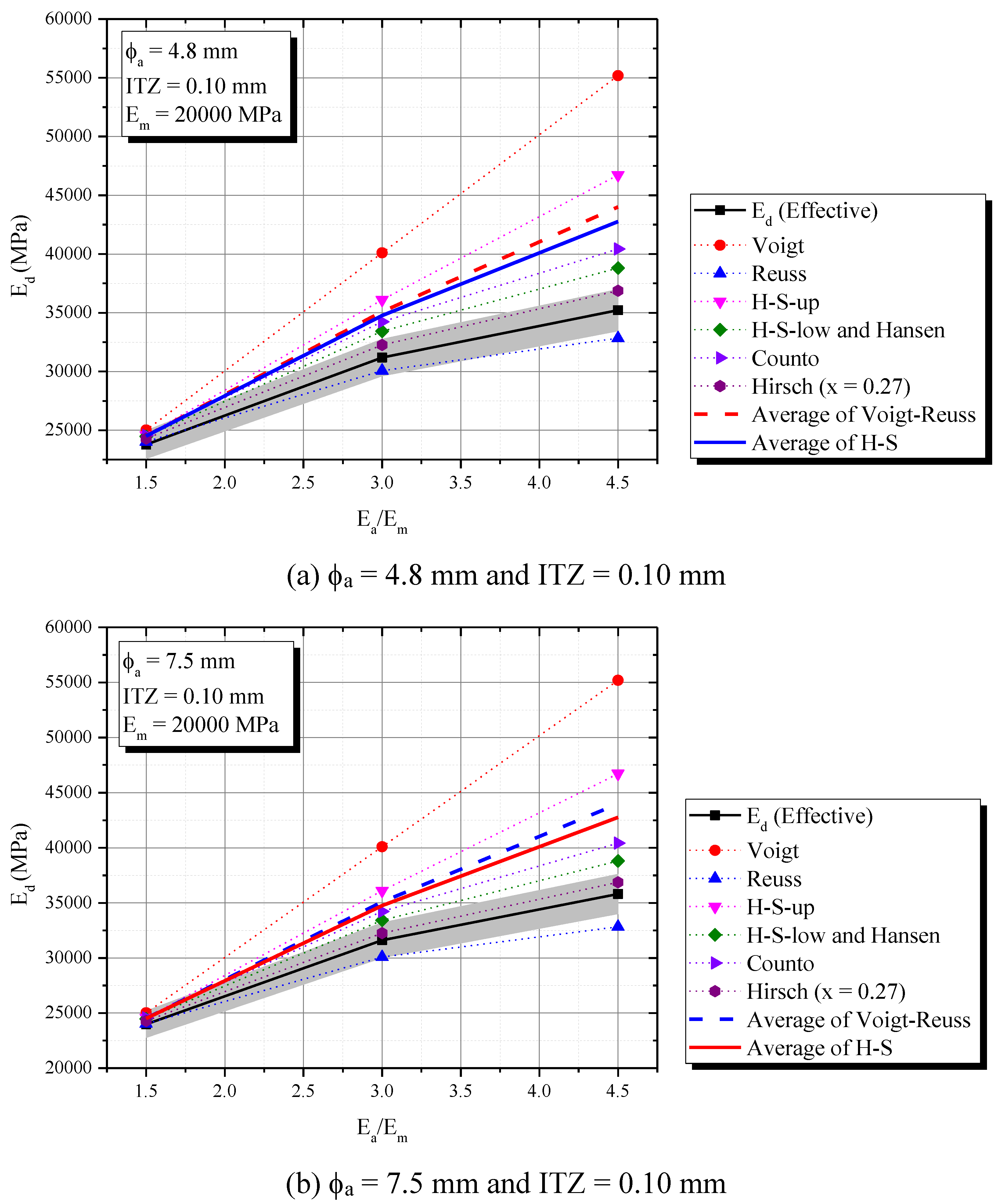
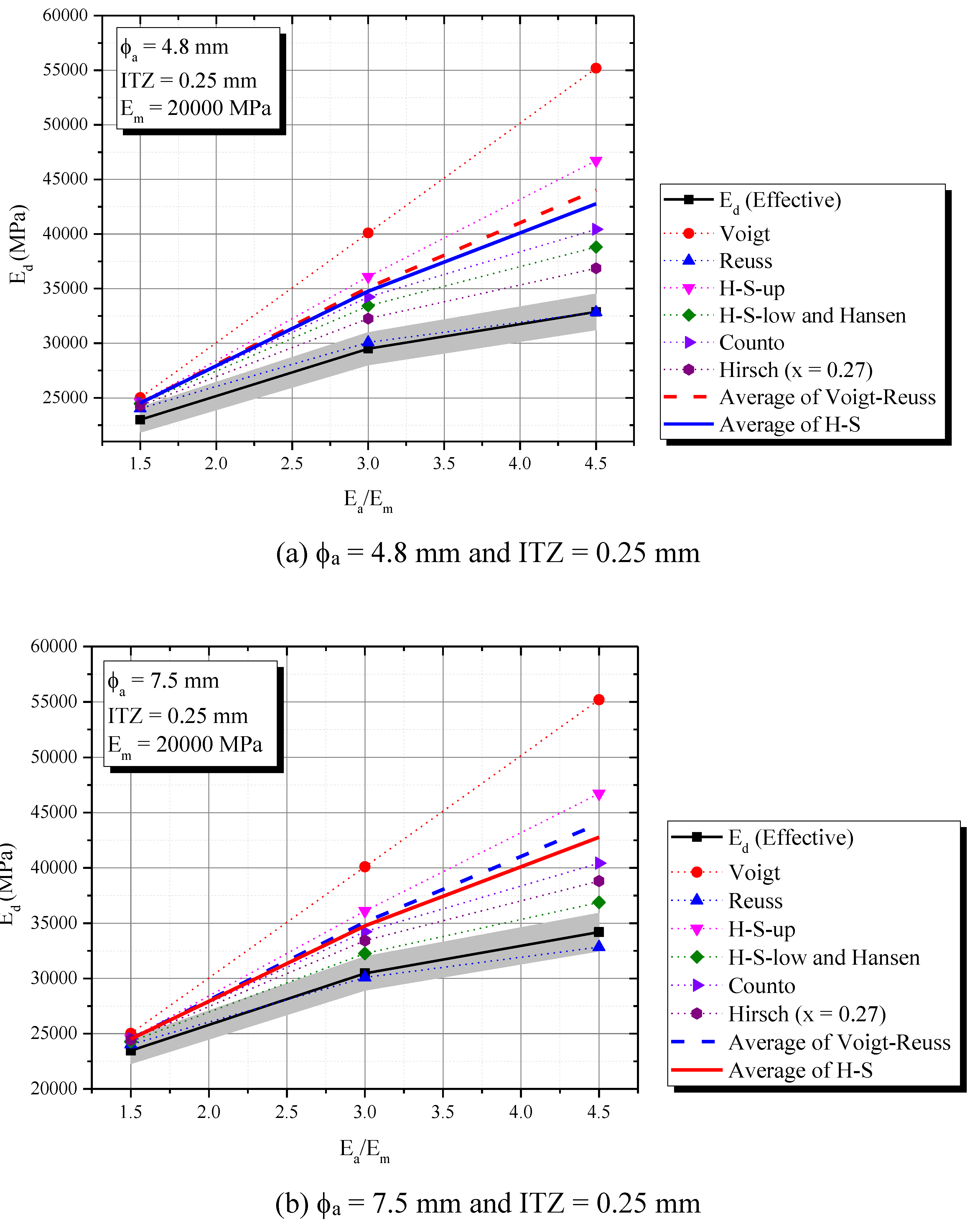
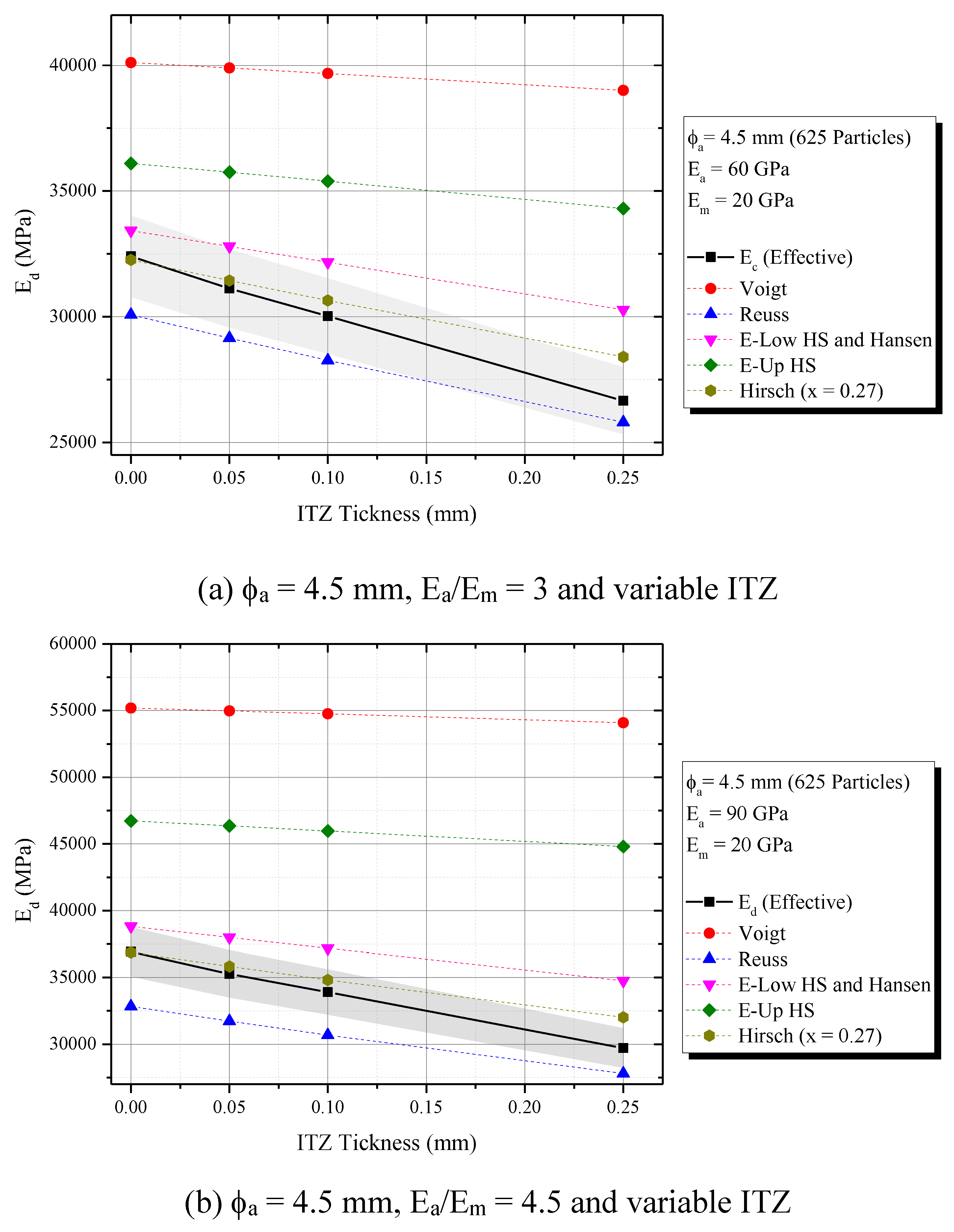
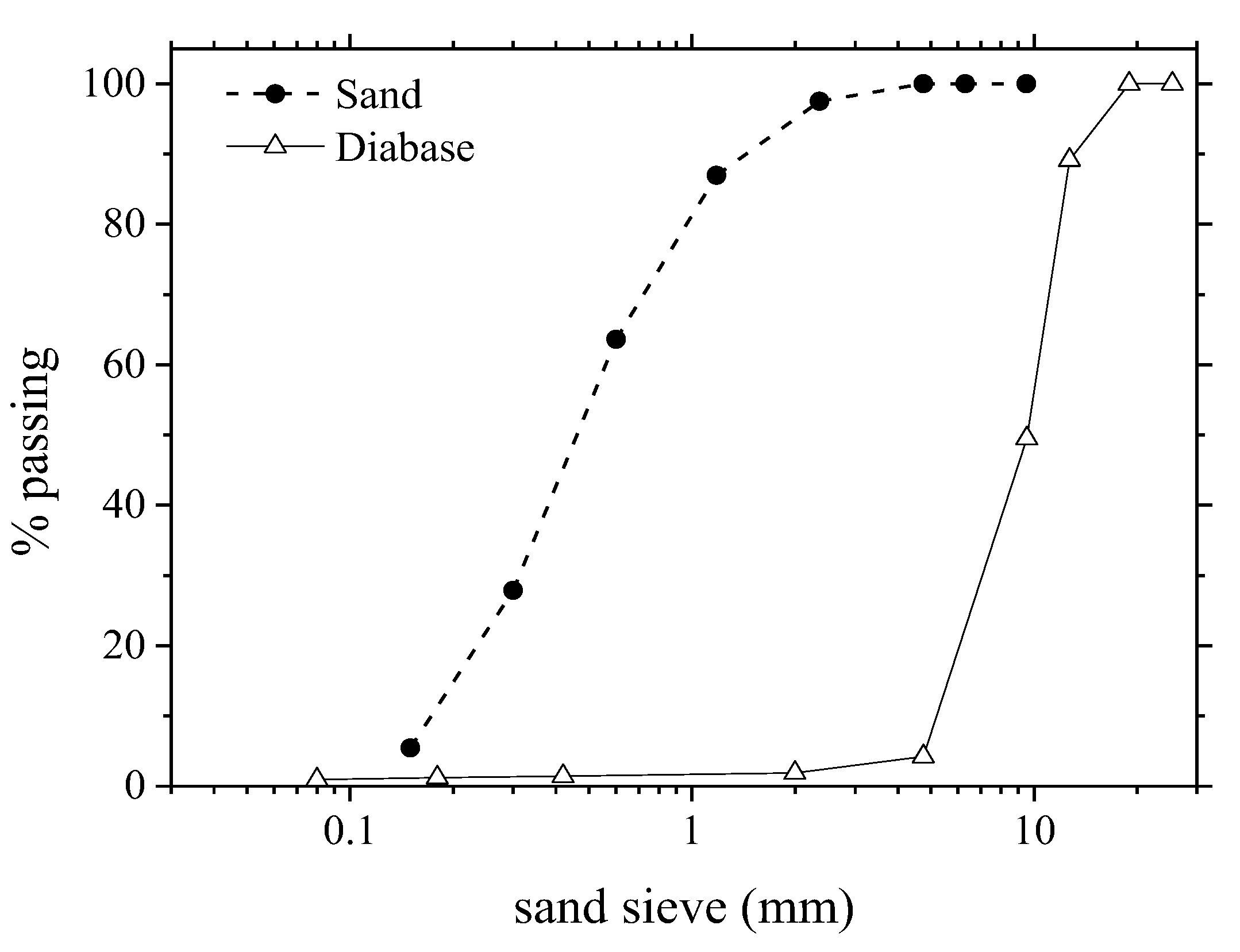
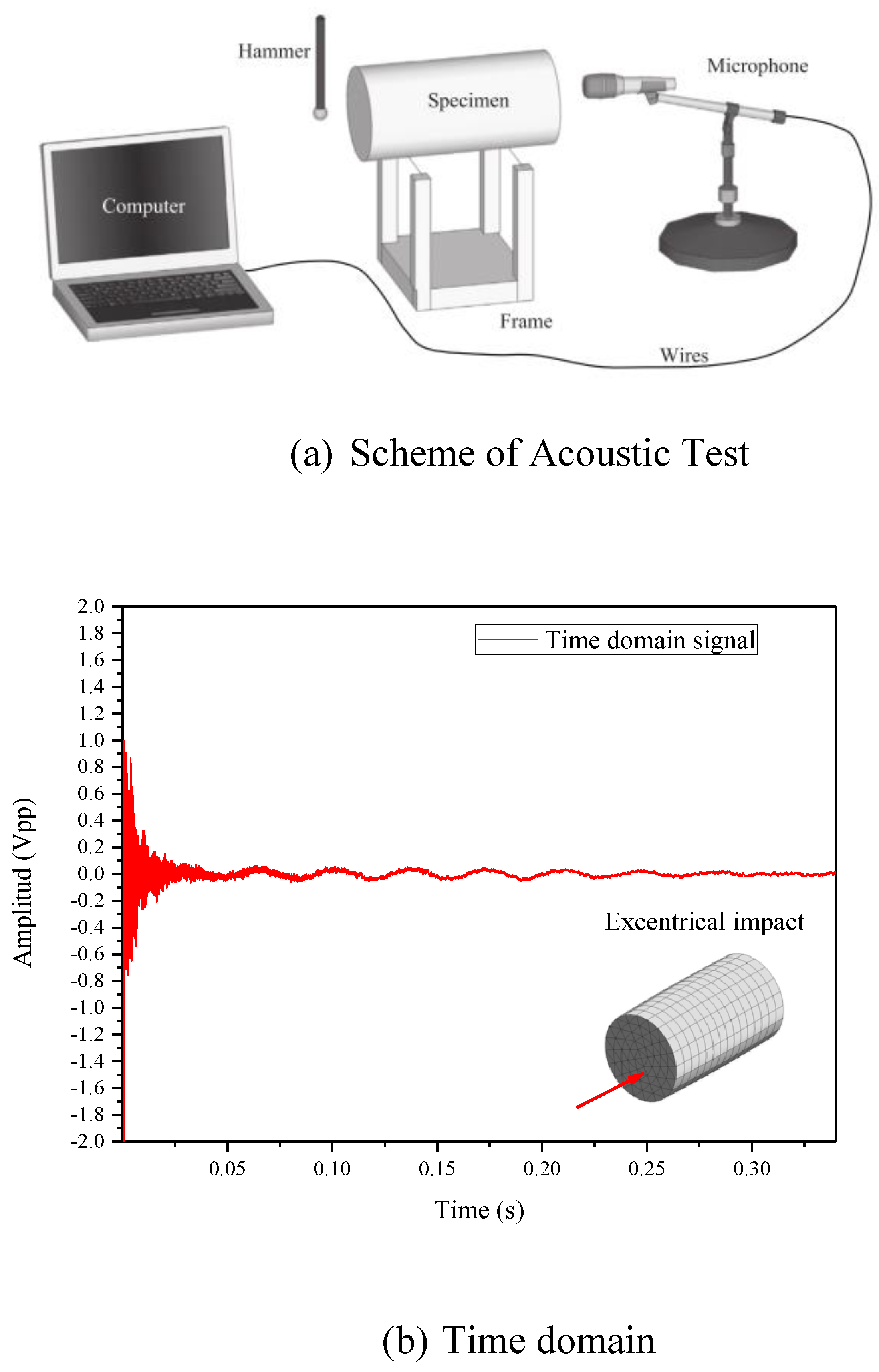
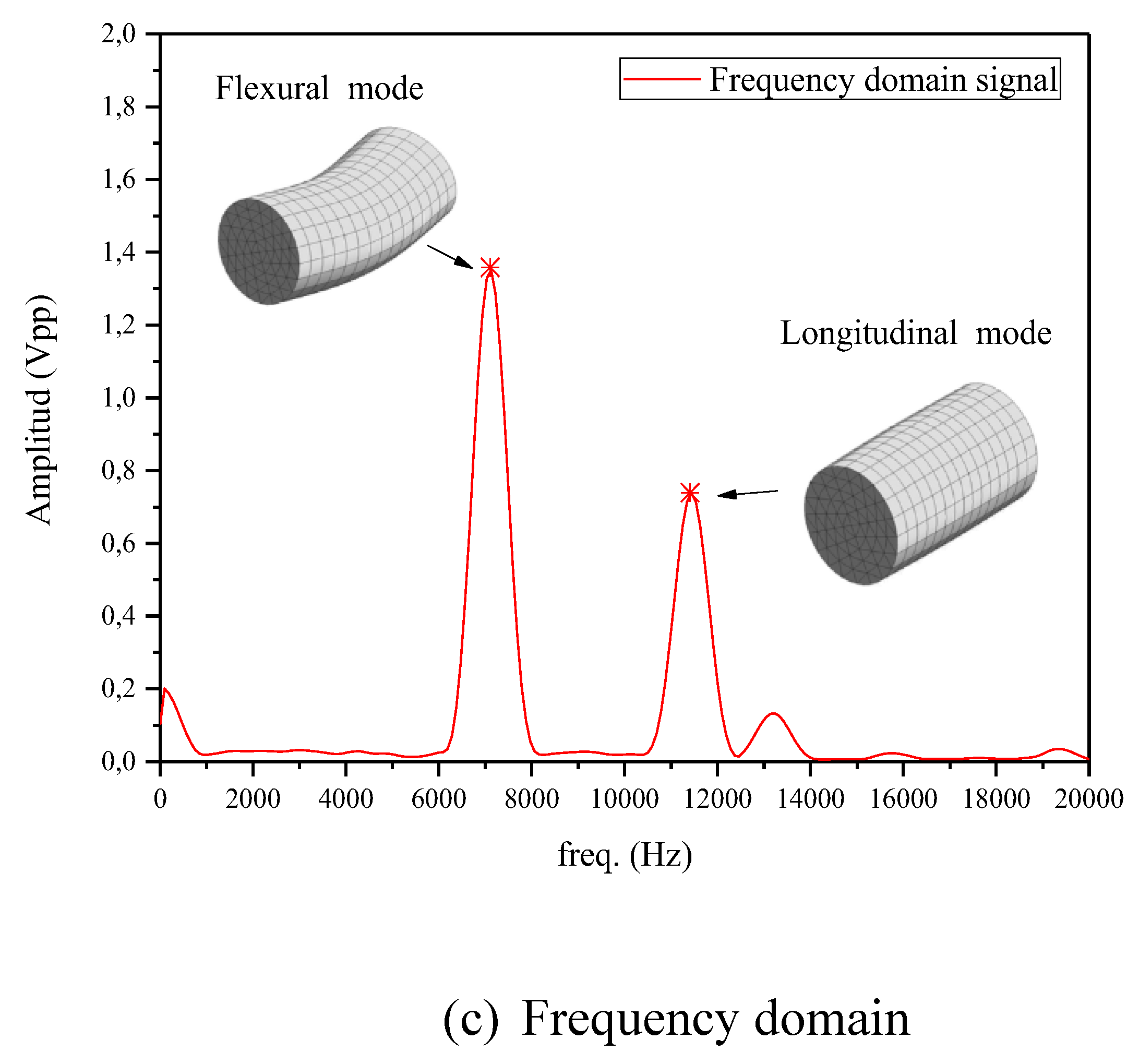
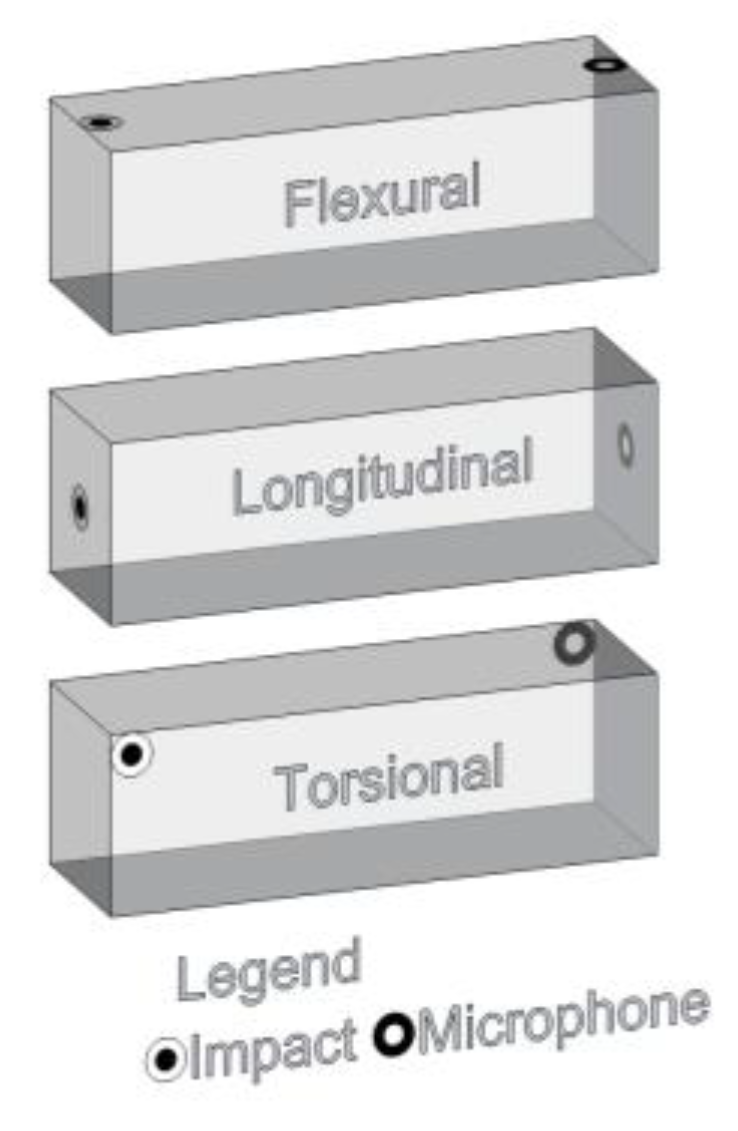
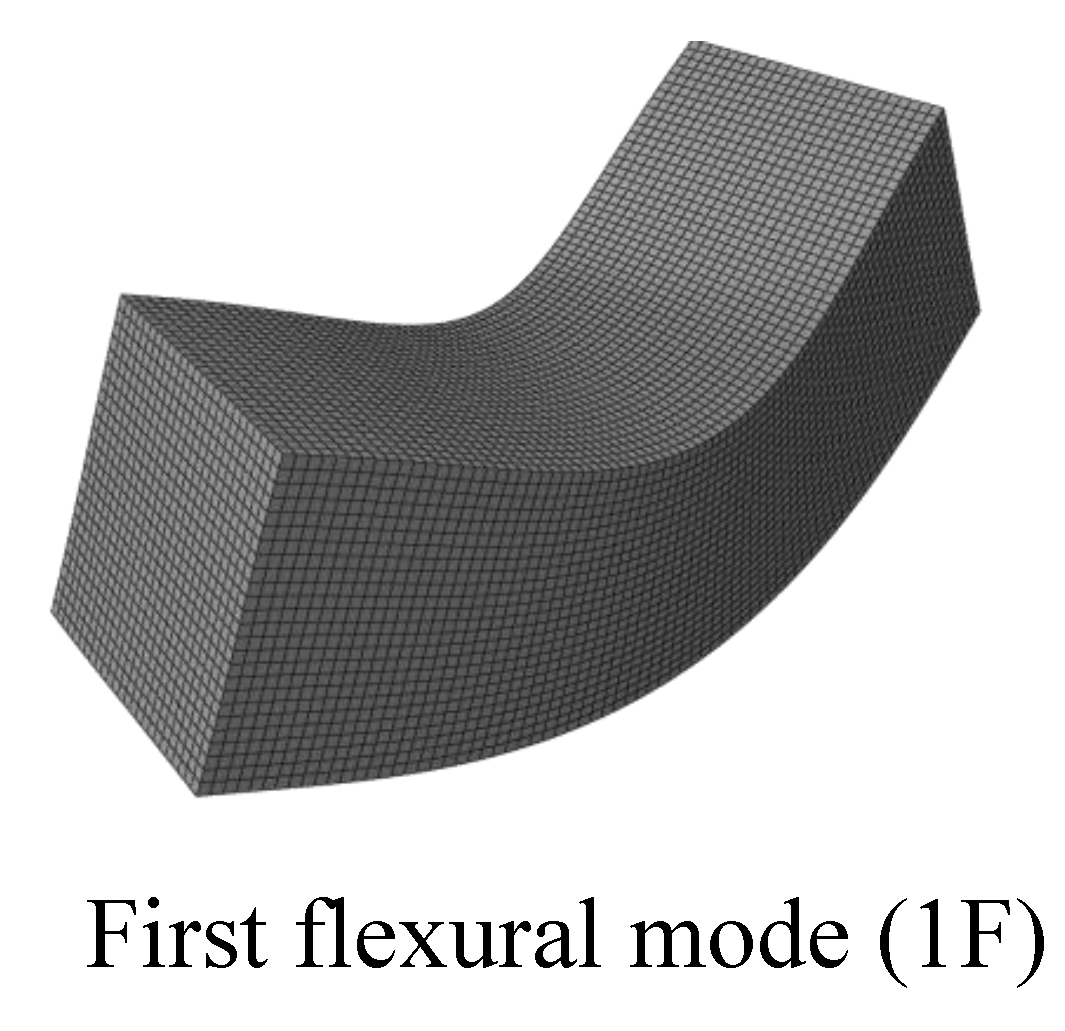
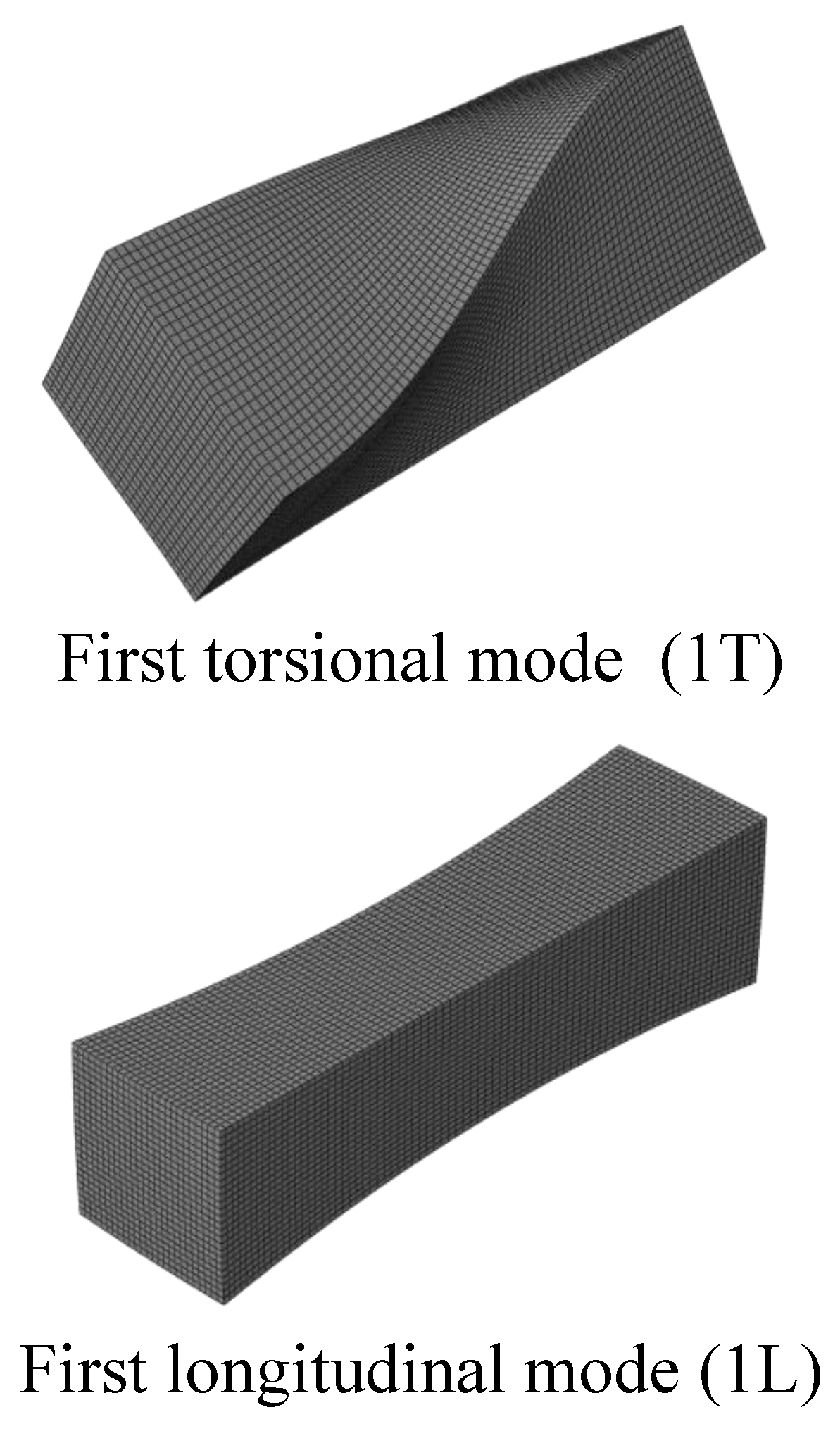
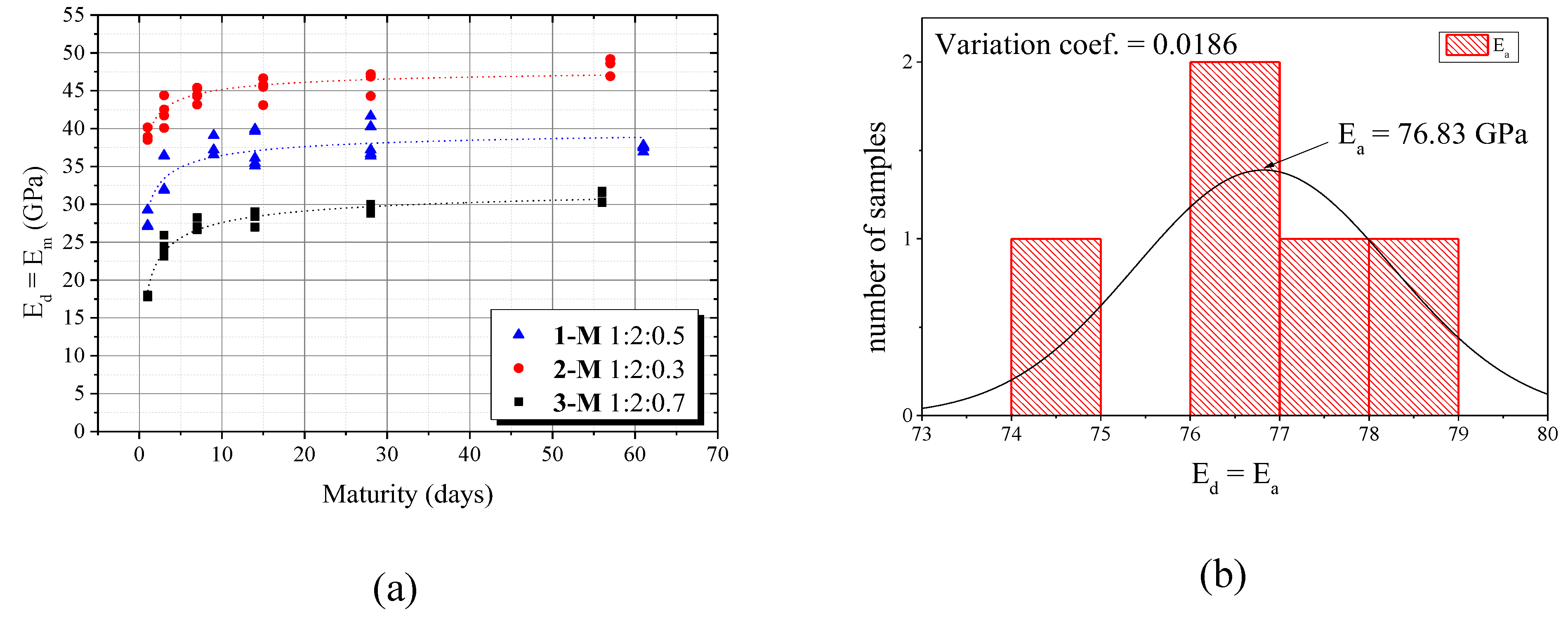
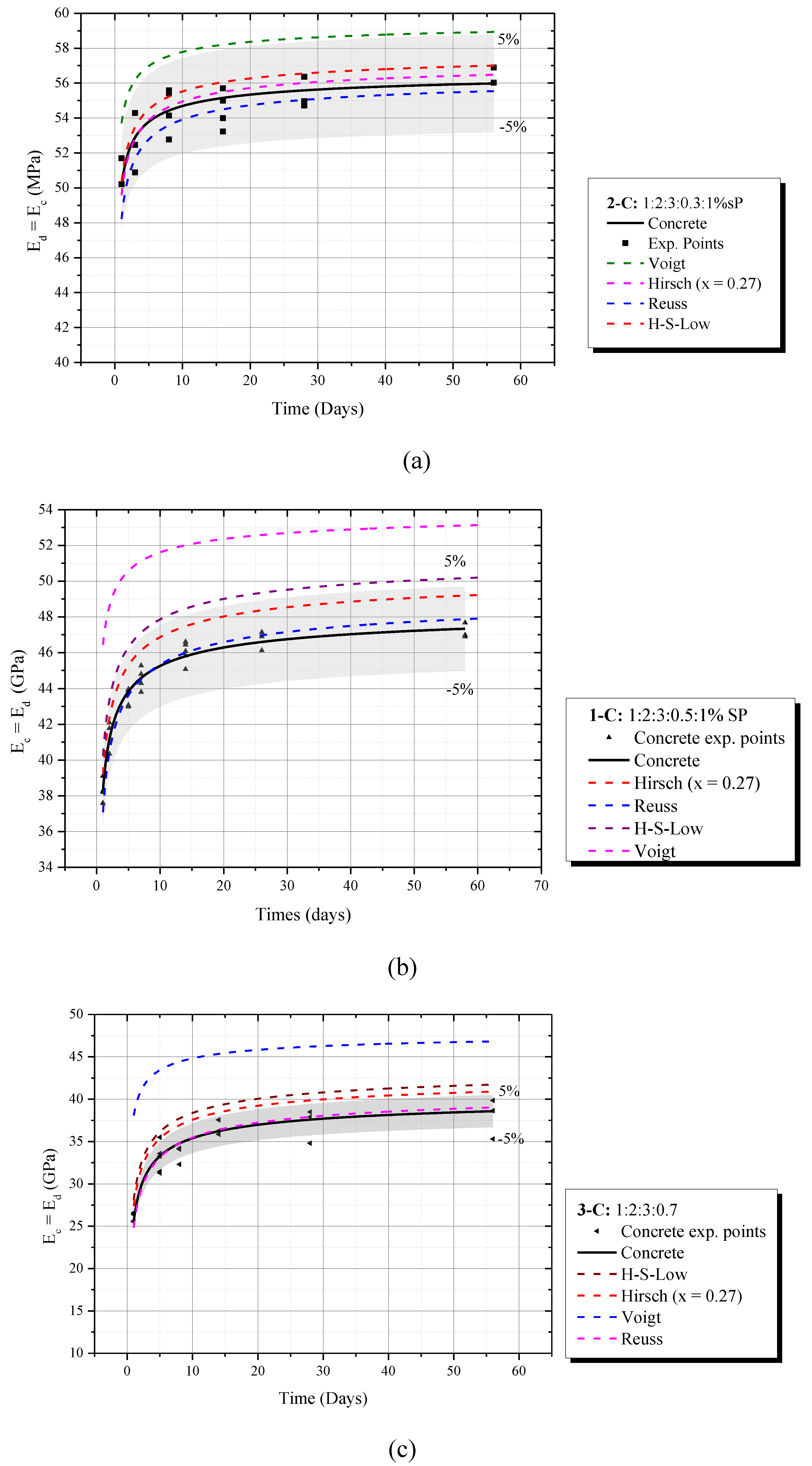
|
E (MPa) |
v | G (MPa) | fbend (Hz) |
fshear (Hz) |
||
|---|---|---|---|---|---|---|
| 20000 | 0.15 | 8696 | 141.4 | 8020 | 93.3 | 7881 |
| 20000 | 0.2 | 8333 | 141.4 | 7994 | 91.3 | 7730 |
| 20000 | 0.25 | 8000 | 141.4 | 7965 | 89.4 | 7587 |
| 30000 | 0.15 | 13043 | 173.2 | 9822 | 114.2 | 9652 |
| 30000 | 0.2 | 12500 | 173.2 | 9790 | 111.8 | 9467 |
| 30000 | 0.25 | 12000 | 173.2 | 9756 | 109.5 | 9292 |
| 40000 | 0.15 | 17391 | 200.0 | 11341 | 131.9 | 11145 |
| 40000 | 0.2 | 16667 | 200.0 | 11305 | 129.1 | 10931 |
| 40000 | 0.25 | 16000 | 200.0 | 11265 | 126.5 | 10729 |
| Model | Parameter | K or A | E0 or G0 (MPa) | R2 |
|---|---|---|---|---|
| Mackenzie | G | K = 2.896 | G0 = 12340.899 | 0.99872 |
| Mackenzie | E | K = 2.370 | E0 = 29593.245 | 0.99935 |
| Hanselmann-Hashin | G | A = - 4.976 | G0 = 13148.495 | 0.97948 |
| Hanselmann-Hashin | E | A = - 3.314 | E0 = 30590.435 | 0.99187 |
| ID | Cement (kg) |
Sand (kg) |
Water (kg) |
Superplasticizer (kg) |
|---|---|---|---|---|
| 1-M | 1.00 | 2.00 | 0.50 | 0.010 (1%) |
| 2-M | 1.00 | 2.00 | 0.30 | 0.010 (1%) |
| 3-M | 1.00 | 2.00 | 0.70 | 0 |
| ID | Cement (kg) |
Sand (kg) |
Coarse Aggregate (kg) |
Water (kg) |
superplasticizer(kg) |
|---|---|---|---|---|---|
| 1-C | 1.00 | 2.00 | 3.00 | 0.50 | 0.010 (1%) |
| 2-C | 1.00 | 2.00 | 3.00 | 0.30 | 0.010 (1%) |
| 3-C | 1.00 | 2.00 | 3.00 | 0.70 | 0 |
Disclaimer/Publisher’s Note: The statements, opinions and data contained in all publications are solely those of the individual author(s) and contributor(s) and not of MDPI and/or the editor(s). MDPI and/or the editor(s) disclaim responsibility for any injury to people or property resulting from any ideas, methods, instructions or products referred to in the content. |
© 2023 by the authors. Licensee MDPI, Basel, Switzerland. This article is an open access article distributed under the terms and conditions of the Creative Commons Attribution (CC BY) license (http://creativecommons.org/licenses/by/4.0/).




